Ph.D. - Neuroscience
University of Texas Southwestern Medical Center - 2012

Professional Preparation
B.S. - Biomedical Engineering
University of Texas at Austin - 2007
University of Texas at Austin - 2007
Publications
Vagus Nerve Stimulation during Rehabilitative Training Improves Functional Recovery after Intracerebral Hemorrhage 2014 - Publication
The Timing and Amount of Vagus Nerve Stimulation During Rehabilitative Training Affect Poststroke Recovery of Forelimb Strength 2014 - Publication
Controlled-Cortical Impact Reduces Volitional Forelimb Strength in Rats 2014 - Publication
Vagus Nerve Stimulation Delivered during Motor Rehabilitation Improves Recovery in a Rat Model of Stroke 2014 - Publication
A target cell-specific role for presynaptic Fmr1 in regulating glutamate release onto neocortical fast-spiking inhibitory neurons 2014 - Publication
Targeting Plasticity with Vagus Nerve Stimulation to Treat Neurological Disease 2013 - Publication
Vagus Nerve Stimulation during Rehabilitative Training Improves Forelimb Strength following Ischemic Stroke 2013 - Publication
The Bradykinesia Assessment Task: An Automated Method to Measure Forelimb Speed in Rodents 2013 - Publication
Appointments
Assistant Professor
University of Texas at Dallas [2014–Present]
Erik Jonsson School of Engineering and Computer Science
University of Texas at Dallas [2014–Present]
Erik Jonsson School of Engineering and Computer Science
Assistant Professor
University of Texas at Dallas [2014–Present]
Behavioral and Brain Sceince
University of Texas at Dallas [2014–Present]
Behavioral and Brain Sceince
News Articles
Dr. Seth Hays: Neuroplasticity and the Wandering Nerve
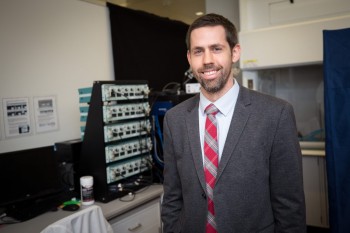 Currently, Dr. Hays manages the Targeted Neuroplasticity Lab at the Texas Biomedical Device Center where his research focuses on treating neurological disease by improving neuroplasticity. His most recent work focuses on rehabilitative training coupled with vagus nerve stimulation (VNS), particularly in short bursts, to improve motor function after stroke.
Currently, Dr. Hays manages the Targeted Neuroplasticity Lab at the Texas Biomedical Device Center where his research focuses on treating neurological disease by improving neuroplasticity. His most recent work focuses on rehabilitative training coupled with vagus nerve stimulation (VNS), particularly in short bursts, to improve motor function after stroke.“The article focused primarily on recovery after stroke,” he shared with us, “but one of the big pushes of my lab is to develop this for other disorders, as well.”
Study: Vagus Nerve Stimulation Boosts Post-Stroke Motor Skill Recovery
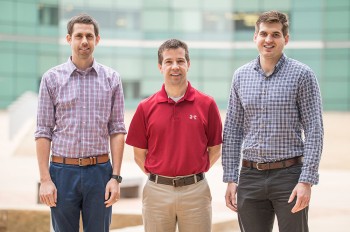 Researchers at The University of Texas at Dallas have demonstrated a method to accelerate motor skill recovery after a stroke by helping the brain reorganize itself more quickly.
Researchers at The University of Texas at Dallas have demonstrated a method to accelerate motor skill recovery after a stroke by helping the brain reorganize itself more quickly.In a preclinical study, the scientists paired vagus nerve stimulation (VNS) with a physical therapy task aimed at improving the function of an upper limb in rodents. The results showed a doubled long-term recovery rate relative to current therapy methods, not only in the targeted task but also in similar muscle movements that were not specifically rehabbed. Their work was recently published in the journal Stroke.
Contract to Help Speed Up Researchers' Accelerated Learning Project
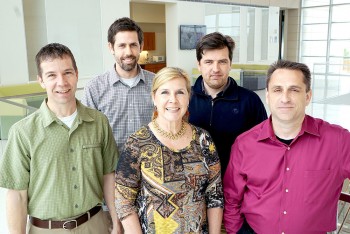 Researchers at the Texas Biomedical Device Center (TxBDC) at The University of Texas at Dallas have been awarded a contract worth up to $5.8 million from the Defense Advanced Research Projects Agency(DARPA) to investigate a novel approach to accelerate the learning of foreign languages.
Researchers at the Texas Biomedical Device Center (TxBDC) at The University of Texas at Dallas have been awarded a contract worth up to $5.8 million from the Defense Advanced Research Projects Agency(DARPA) to investigate a novel approach to accelerate the learning of foreign languages. The contract is part of DARPA’s Targeted Neuroplasticity Training (TNT) program, which seeks to advance the pace and effectiveness of a specific kind of learning — cognitive skills training — through precise activation of peripheral nerves, which in turn can strengthen neural connections in the brain.
Vagus Nerve Stimulation Device Gets Closer to Next Stage of Testing
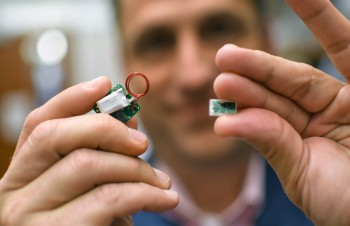 Bioengineering researchers at The University of Texas at Dallas recently received a $1.4 million grant from the National Institutes of Health to study the use of wireless vagus nerve stimulation (VNS) to enhance recovery after stroke.
Bioengineering researchers at The University of Texas at Dallas recently received a $1.4 million grant from the National Institutes of Health to study the use of wireless vagus nerve stimulation (VNS) to enhance recovery after stroke.Dr. Seth Hays, assistant professor of bioengineering in the Erik Jonsson School of Engineering and Computer Science and Fellow, Eugene McDermott Professor, along with Dr. Robert Rennaker, professor of engineering and neuroscience and the Texas Instruments Distinguished Chair in Bioengineering, have created a wireless, low-cost clinical-grade device designed to eliminate the challenges of previous VNS devices.
“This is one of the first human-grade implants designed, developed and manufactured at a university,” said Rennaker, associate director and chief technology officer of the Texas Biomedical Device Center at UT Dallas.
Study: VNS Shows Promise for Improving Peripheral Nerve Recovery
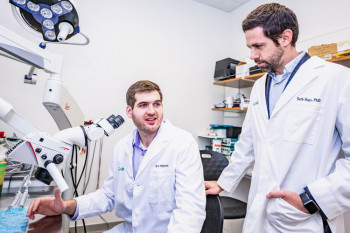 When a nerve in an arm or leg is damaged, the brain adapts rapidly to the suddenly missing signal from that part of the body. This reaction complicates later efforts at rehabilitation.
When a nerve in an arm or leg is damaged, the brain adapts rapidly to the suddenly missing signal from that part of the body. This reaction complicates later efforts at rehabilitation.In an effort to restore function after peripheral nerve injury, researchers at The University of Texas at Dallas have demonstrated in an animal model that sparking change in the central nervous system during physical rehabilitation enhances recovery.